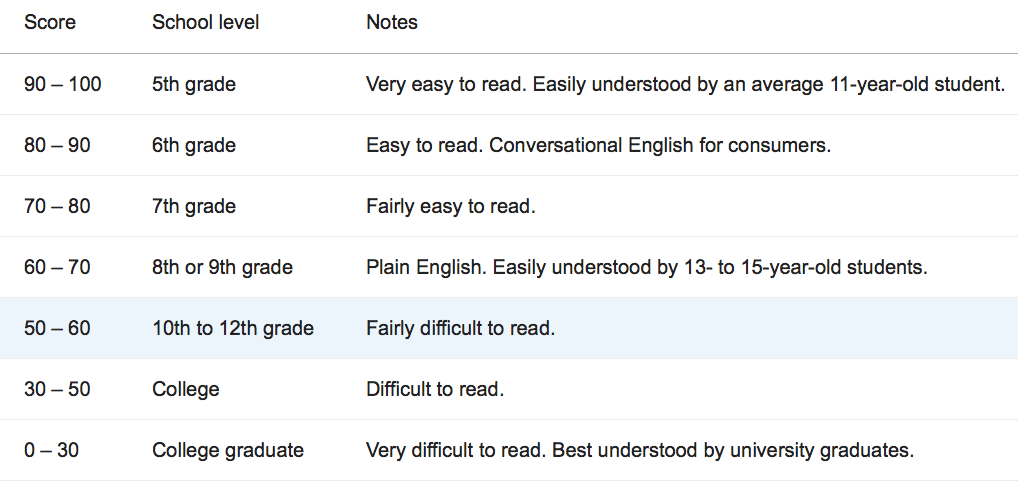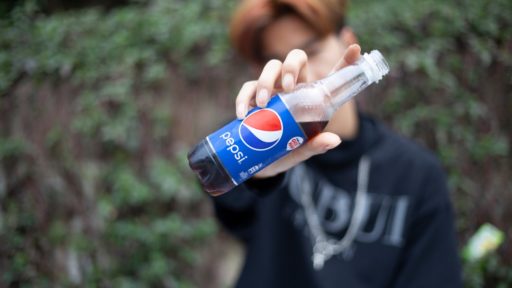Do you ever feel you need some kind of translator for all this marketing jargon?
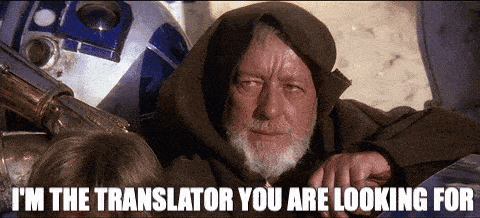
The world of content marketing moves incredibly fast. It seems like every day; there is a new type of content to know or metric to measure. All these new terms can overwhelm even the most hardened content strategist.
But have no fear. We have created the ultimate marketing glossary. Full to the brim with all the must-know content strategy terms for 2023.
So, settle down and let us translate this complicated jargon into easy, digestible definitions.
52 must-know content strategy terms
1. A/B testing
A/B testing, or split testing, is when a company tries out different variations of a product, feature, function, or content.
These versions are then introduced to a test group to monitor performance. It is crucial to have a metric in mind when running these experiments to have a precise gauge of what success looks like.
For instance, we could have:
Option A) A red ‘cancel subscription’ button
Option B) A blue ‘cancel subscription’ button
We could then roll out both of these variations and monitor the number of cancellations each generates. This would enable us to know which color of button minimizes cancellations.
You can also A/B test your copywriting:

2. Above the fold
 .
.
Oh wow, look at that beauty. I cannot wait to start experiencing a fresh way to manage my money. This would be my reaction if I saw this fantastic example of above-the-fold content.
This type of content is the first section a user will see when they land on your webpage before they scroll down. It needs to be beautiful and engaging to make the audience want to know more.
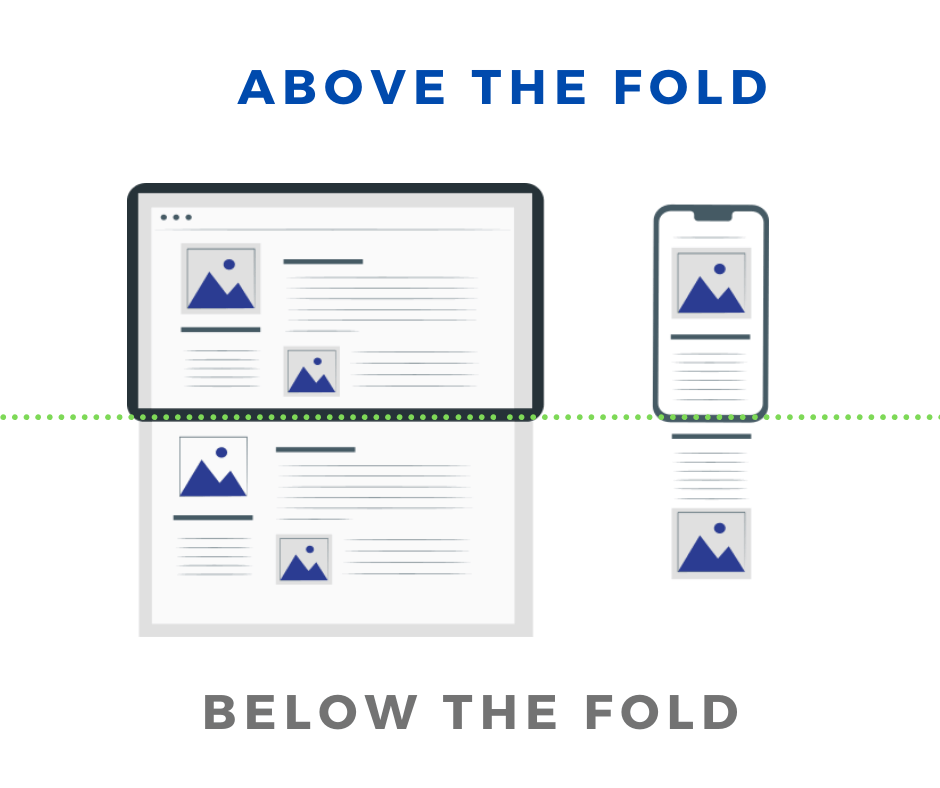
3. Algorithm
In terms of marketing, there is only one algorithm you need to know. And that’s the enigma known as Google’s algorithm. Ohhh, mysterious.
No one knows exactly how it works, but it controls nearly everything we do as marketers. It is crucial that we appease the algorithm to climb the SEO rankings.
But how? Google has revealed some key ranking factors, including:
- Backlinks – the recommendations from external sources
- Freshness – how recent the content is
- Keyword mentions – the amount of related search terms in content
- User experience – the quality of user experience taking into account page speed, user friendliness, and site architecture
- Topical authority – the level of importance of a particular website in a topic
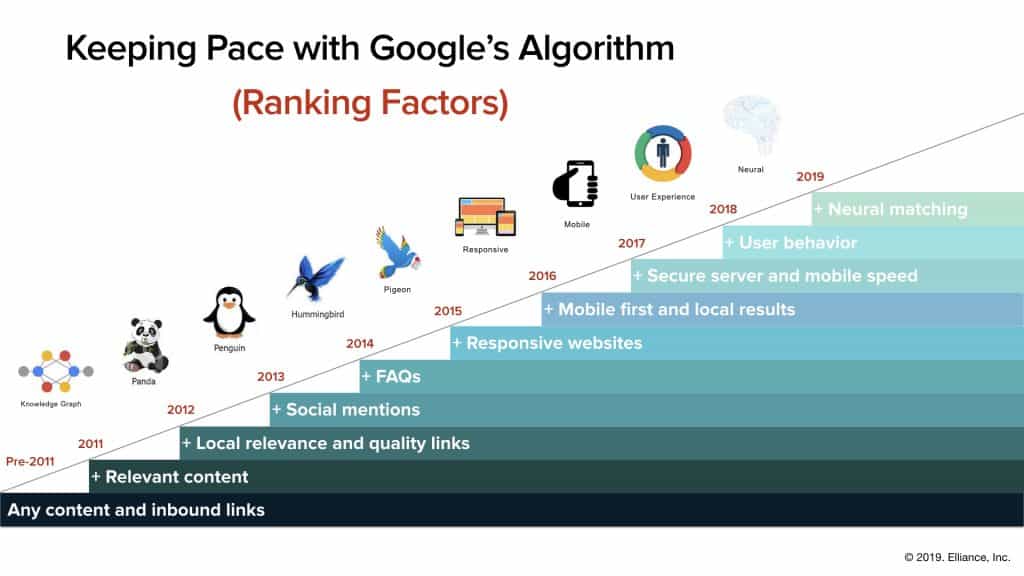
4. Alternative text (alt-text)
We are all different. That is a fact. And that means our content needs to be accessible to all.
One of the most important tools regarding accessibility is the use of alt-text.
Alt-text is a means to describe visual content via screen readers to those who are unable to see it. It should describe the function and appearance of an image.
But please, don’t make it boring. So, many companies fall into this trap. No one wants to hear ‘an infographic’ for the hundredth time in a row. Add some flair and make it engaging.
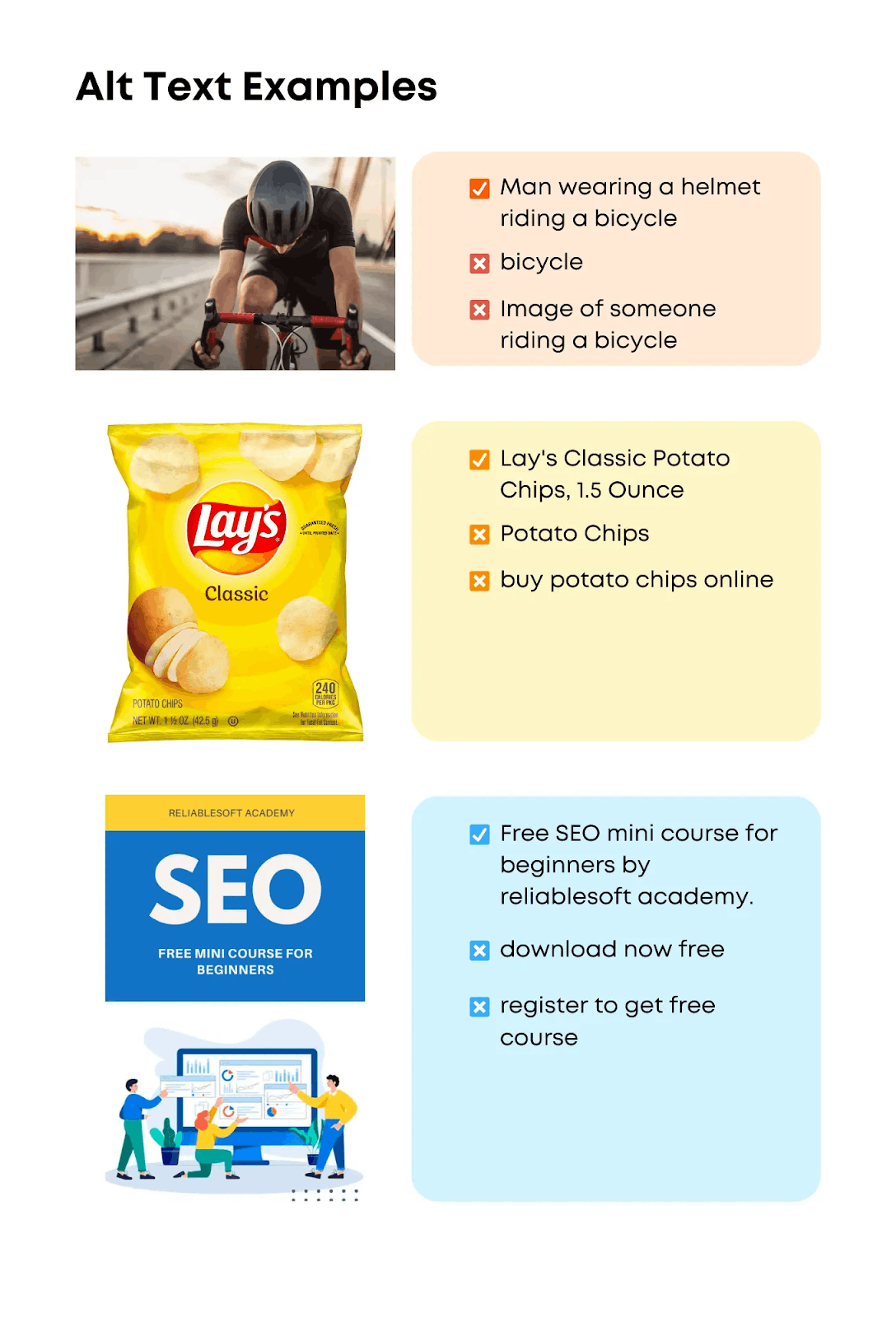
5. Analytics
Analytics is the process of analyzing a vast range of metrics to track and measure the performance of marketing efforts.
Companies can use this data to:
- Examine the successes and failures of past marketing campaigns.
- Monitor the performance of your current marketing efforts
- Help plan a successful future marketing strategy
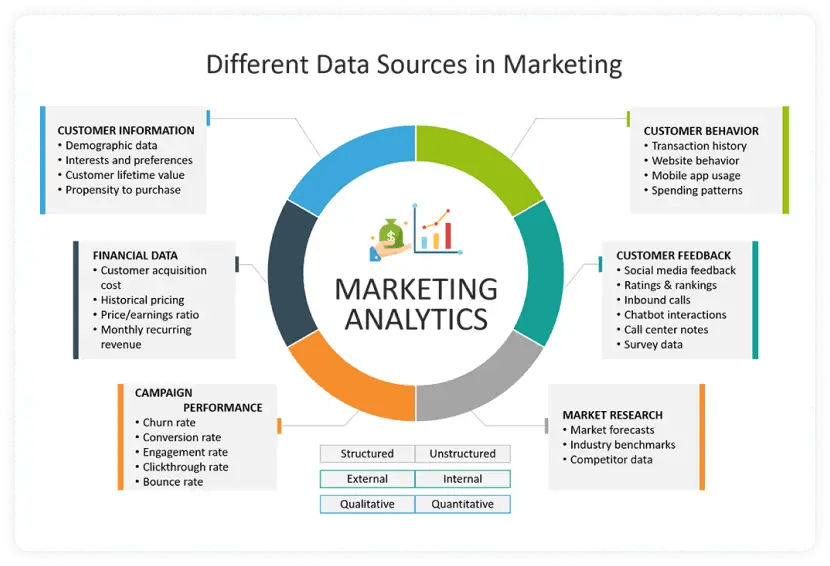
6. Backlinks
Imagine we are the owner of a candy shop, selling the best confectionery in all the land.

We write a blog about the best chocolate available in the US and write this: ‘M&Ms are the best chocolate around, sorry not sorry Hershies’.
Look at that blue, underlined beauty. That is our website making a backlink to the M&M webpage.
A backlink is a recommendation from an external source. And search engine algorithms crave these types of recommendations. These backlinks can boost your SEO rankings to make your content climb the SERPS (search engine results pages).

7. Bottom-of-the-funnel (BOFU) content
You are just about to part with your hard-earned cash to buy your fifth luxury yacht to add to your fleet. But all of a sudden, you are having some doubts. Enter bottom-of-the-funnel content to secure that sale.
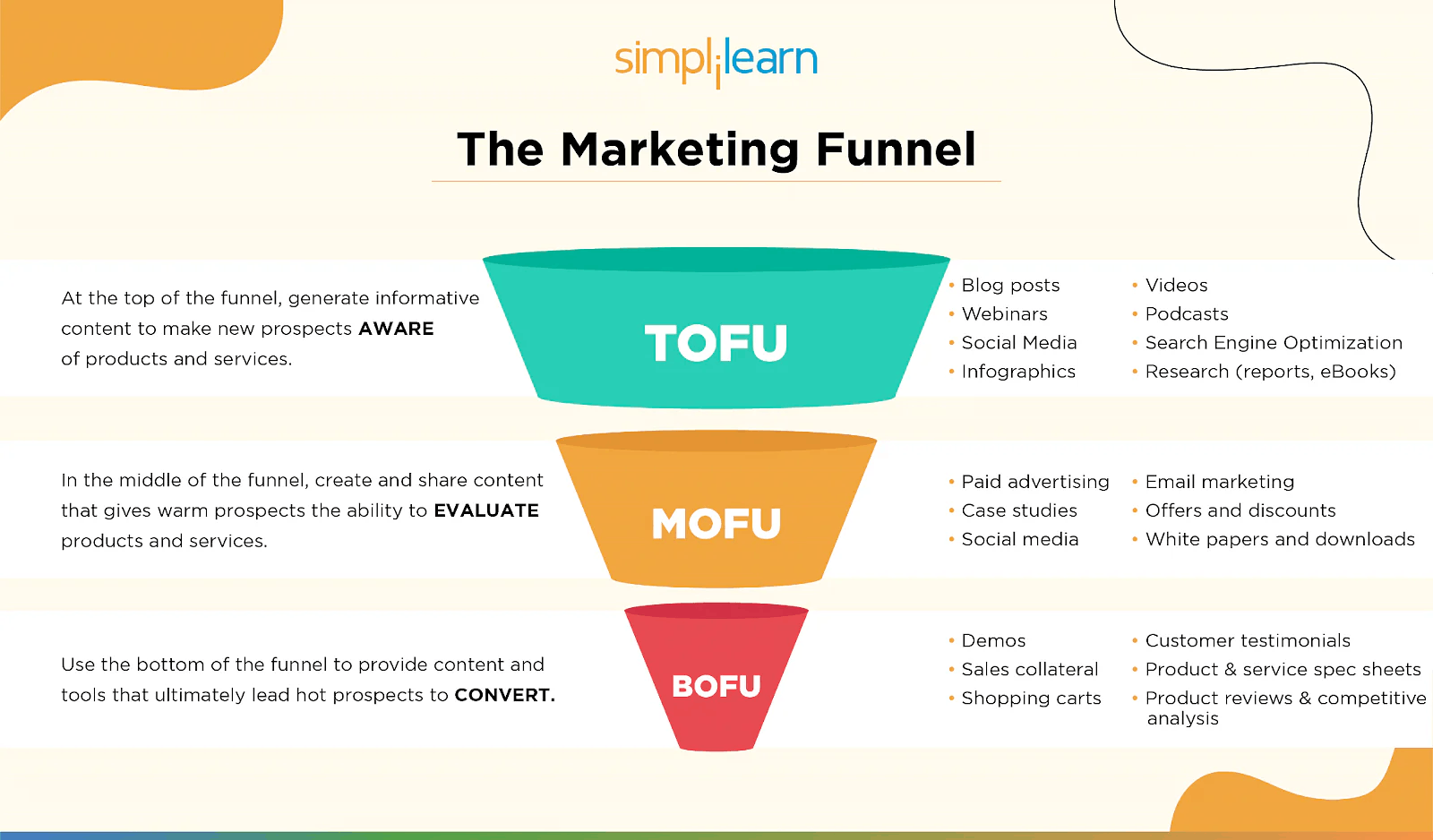
Bottom-of-the-funnel content is the home stretch. Your company has nearly sealed that deal. But the consumer needs more encouragement. BOFU content provides additional information to the user to lock down that purchase.
Some examples of BOFU content are:
- Testimonials
- Demos
- Pricing information
- Competitor comparisons
8. Bounce rate
Bounce rate is an essential metric for any marketer to know. It is the number of consumers who only visit a single page on your website before leaving.
To find your bounce rate, use the simple formula below.

This metric highlights how many potential conversions your company has missed out on. This could signify that your website may have content, page layout or user experience issues as it cannot maintain visitors.
9. Brand awareness
Think about McDonald’s for a second. What is the first thing that comes to mind? The glowing golden arches of the logo? The catchy tagline? The taste of a Big Mac?
Yeah, McDonald’s has top-tier brand awareness. It’is ingrained into our culture and minds.
You see, brand awareness is how visible and memorable your brand is to potential consumers. It is one of the critical goals of content marketing as it leads to more sales and conversions.
After all, a brand will only get your custom if it is on your mind.
10. Business-to-business marketing (B2B)
Think about a fancy seafood restaurant. You know, the type where the dishes are minuscule, but the prices are astronomical.
Well, all of that delicious fish comes from somewhere—a supplier. This is an example of a business-to-business transaction.
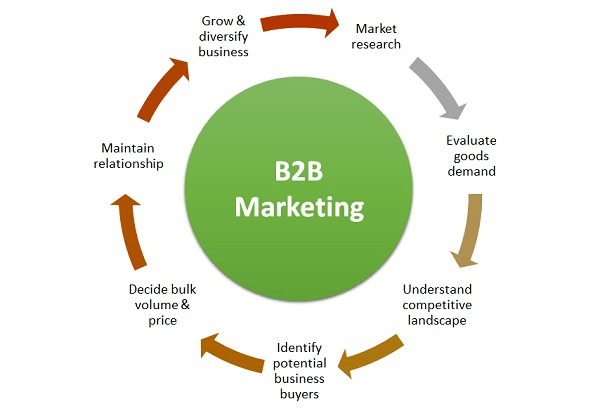
B2B marketing is one business marketing its services or products to another business. This type of marketing is informational and fact-based as it focuses on the return on investment.
11. Business-to-consumer (B2C) marketing
Switch on the TV right now and flip over to any channel. You are most likely experiencing business-to-consumer marketing in the form of an advert.
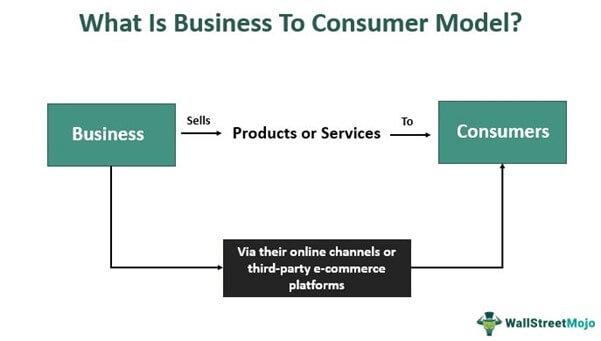
B2C is the marketing of products, experiences or services towards consumers rather than businesses. This marketing is more geared towards emotion than hard facts.
12. Buyer personas
Oh wow, look at that handsome devil over there. He is everything your company wants from a customer. Let’s call him Brian Branding.

This fictionalized ‘perfect customer’ is your buyer persona. An amalgamation of your customer’s needs, wants, values, average demographic, and behaviors.
However, this has to be based on hard facts and solid data to create a reliable persona. Vague buyer personas will not be beneficial to your company.
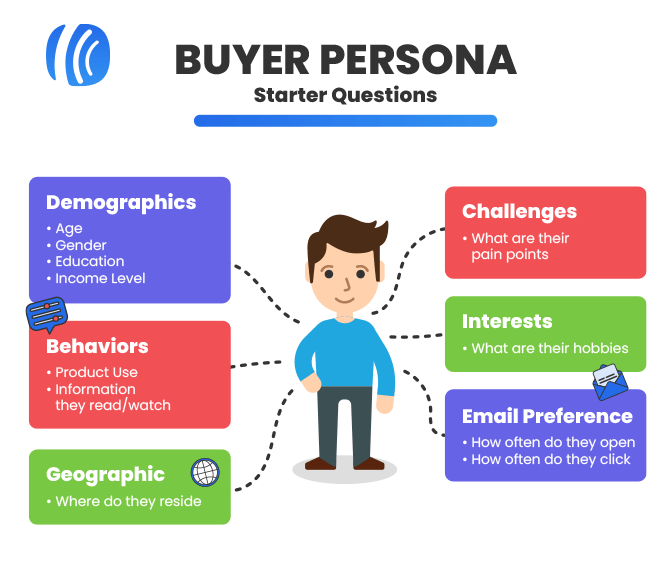
A buyer persona gives your marketing team a more concise target to aim content towards. You are no longer marketing to a mass sea of consumers. No, you are marketing to Brian Branding. And by golly, his needs are most definitely going to be met.
13. Call to action (CTA)
A CTA, or call to action, is quite simply a statement that encourages the target audience to take a desired action. This is done by using strong action words designed to instill enthusiasm or another emotion.

14. Click-through rate (CTR)
“Yet another metric” I hear you cry. Yes, but this one is a doozy. It is one of the ultimate measurements of the success of your content marketing strategy.
CTR is the number of users who click on a link after viewing or engaging with content. To figure out this metric, simply use the below formula.
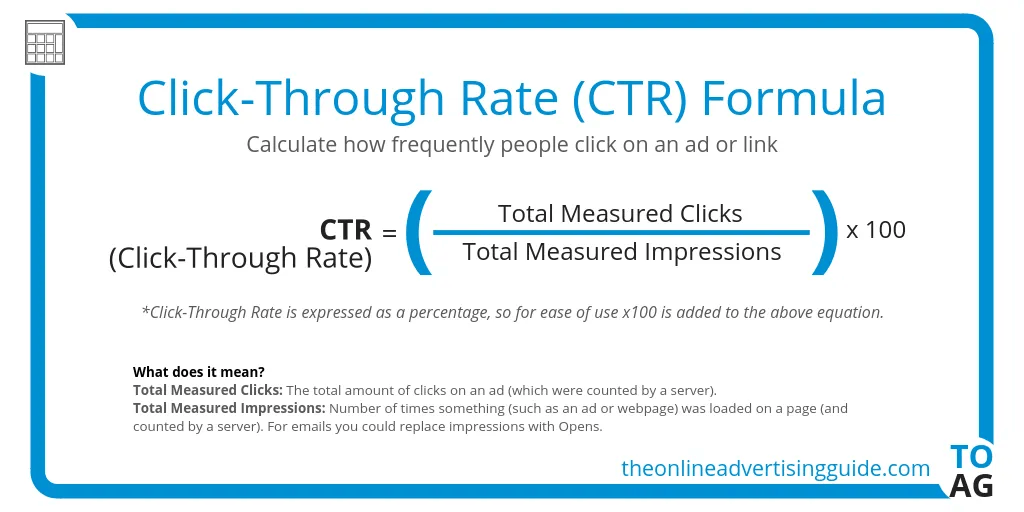
15. Content audit

Put down the shoe; we know your content is perfect. We didn’t mean to insult you. But let’s be honest for a second; there is always room for improvement.
A content audit is the process of analyzing, critiquing and cataloging your entire content library. Once this tough task is complete, you will be able to identify content gaps, SEO failures, quality control issues, outdated content, and numerous other potential flaws.
You can then optimize your SEO and improve your consumer experience with this abundance of helpful information.
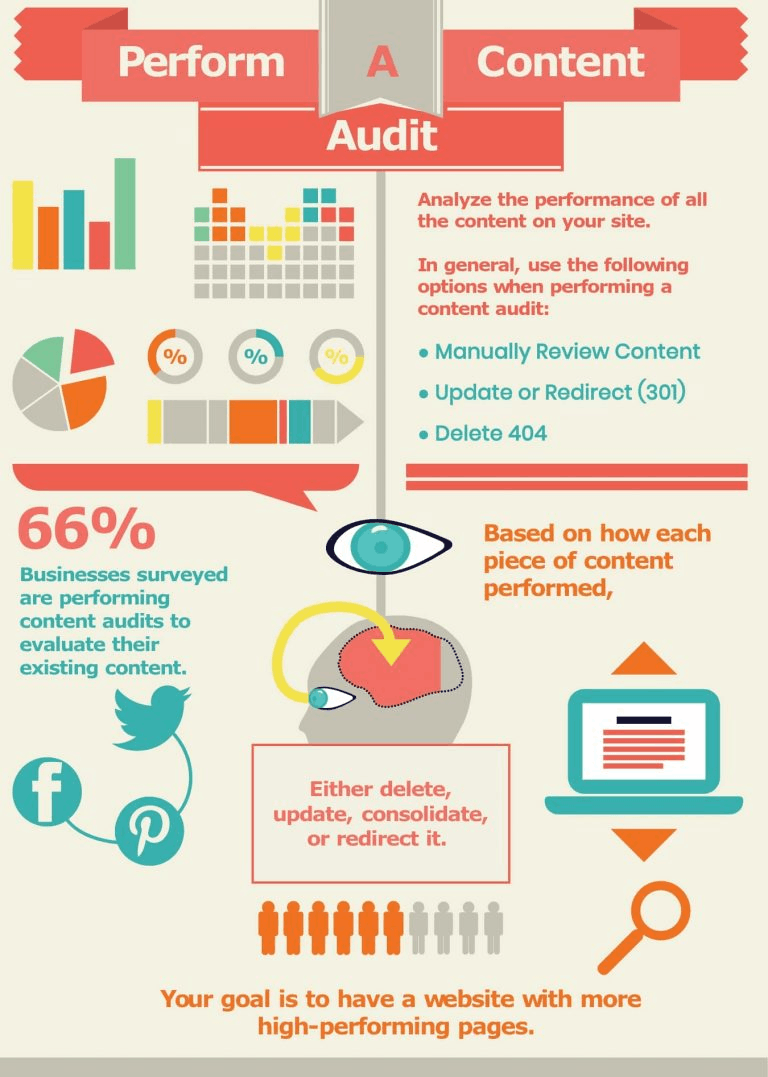
16. Content curation
Picture an Ancient Egyptian museum filled to the brim with the best artifacts known to man. All these exhibits are hand selected to be relevant to the subject matter and engage with the target audience.
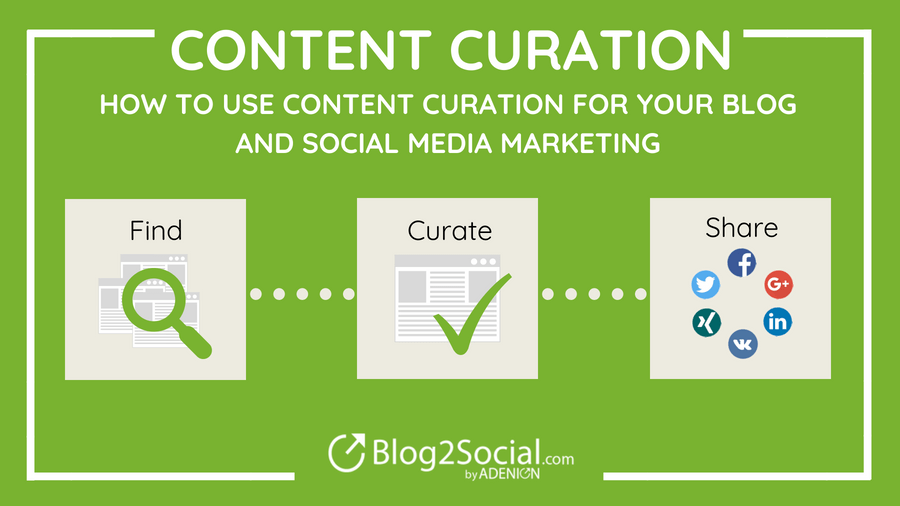
This is content curation, but with less ancient artifacts and more digital marketing. It is the process of collecting high-quality, relevant content from multiple sources across the web and sharing it with your chosen demographic.
Need some help with that? Try Quuu.
17. Content management system (CMS)
Does your coding knowledge begin and end with The Matrix? If yes, then building and maintaining a website from scratch might be above your skill set.
A content management system is software, like WordPress, that creates the infrastructure of a website and allows you to create, edit, and manage content, including blogs, with limited technical knowledge. In fact, it is estimated that 43.6% of all websites now use CMS software as a template.
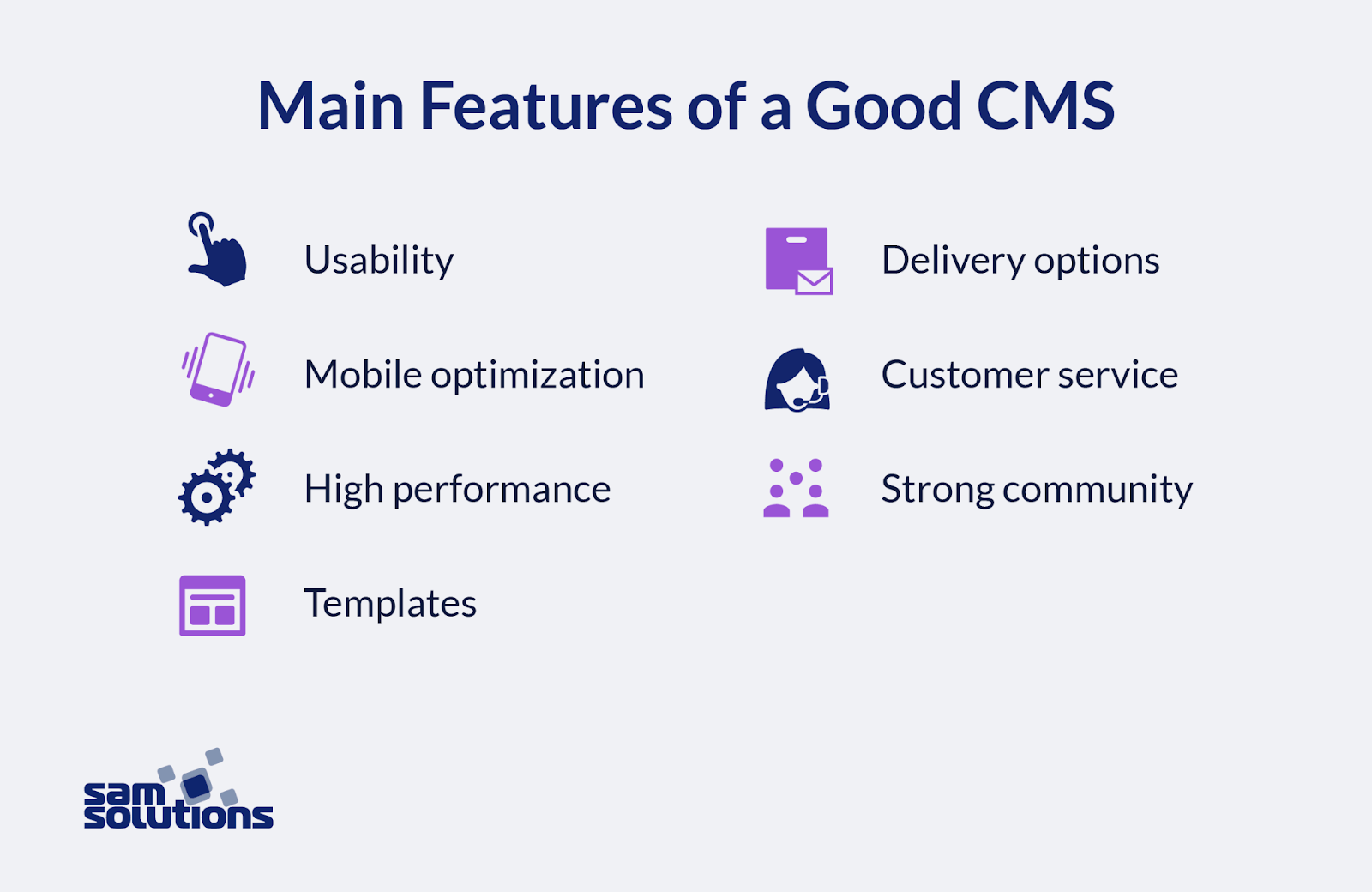
18. Conversion rate
No, put away your traveler cheques. We’re not talking about that type of conversion rate.
Conversion rate is a metric that all content marketing teams need to know. This statistic shows the number of visitors that have completed a desired action. A desired action can include subscribing to a service, buying a product, or clicking on an advert.
This is an important metric that can indicate how effective a marketing strategy is at achieving business goals.

19. Cost per click (CPC)
Running a paid advert on social media or a website is a fantastic way to reach out to your target audience.
Cost per click is one of the most common advertising models around. It is the cost each time a user clicks an advert. For instance, if an advert receives 10,000 clicks at a $1 rate, then the total cost of the campaign would be $10,000.
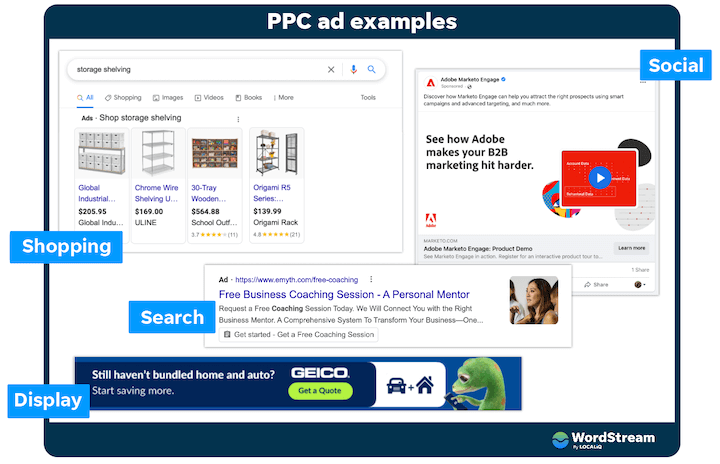
20. Editorial calendar
The job of a copywriter is a constant juggling act involving countless tasks. And to stop those balls from falling, you need to be organized during the entire content creation lifecycle.
Enter the editorial calendar.

An editorial calendar is a digital workflow that allows content marketing teams to structure and schedule their content plans. This enables project management to assign tasks to specific team members and monitor their progress with ease, optimizing the content marketing process.
21. Email marketing
Take a peek into your email inbox, and you will find endless examples of email marketing cluttering your folders.
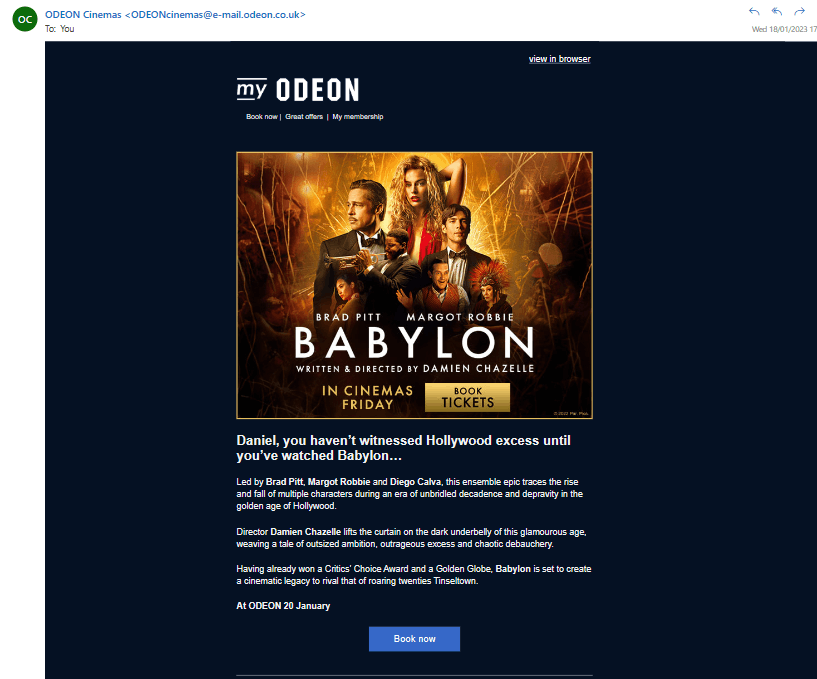
It is a form of direct marketing to the consumer that advertises a product or service. They come in many different flavors.
- Informational emails – an email that provides information about your brand, product or service.
- Promotional emails – offer discounts or promotions for products
- Re-engagement emails – an email that attempts re-engage with inactive users
- Newsletters – a collection of news articles about a chosen topic
- Welcome emails – an email that welcomes a new user to the service
22. Evergreen content
Evergreen content is a piece of content that is similar to Will Smith. It never ages.
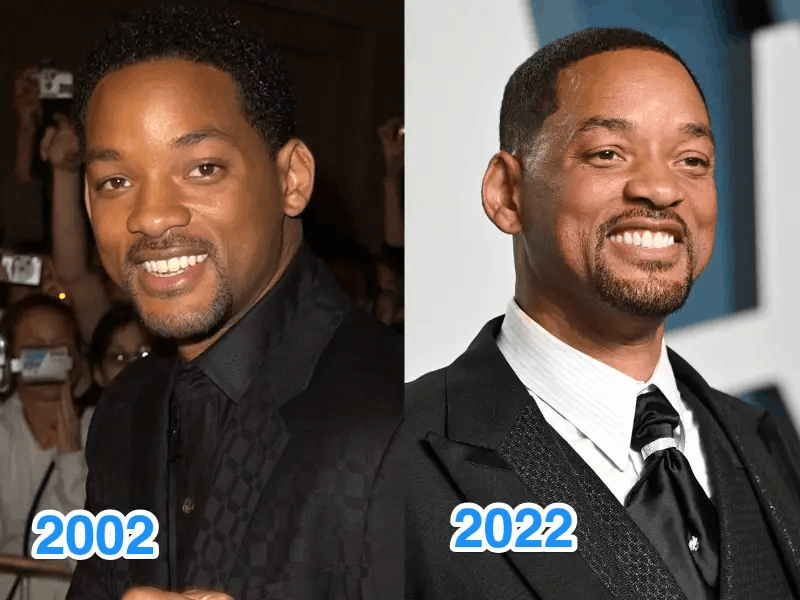
This type of content is always relevant and fresh for your target audience. It is the canned goods of digital marketing; it never expires. This means evergreen content does not include:
- News
- Statistics that can become outdated
- Seasonal articles
- Content focused on trends or fads
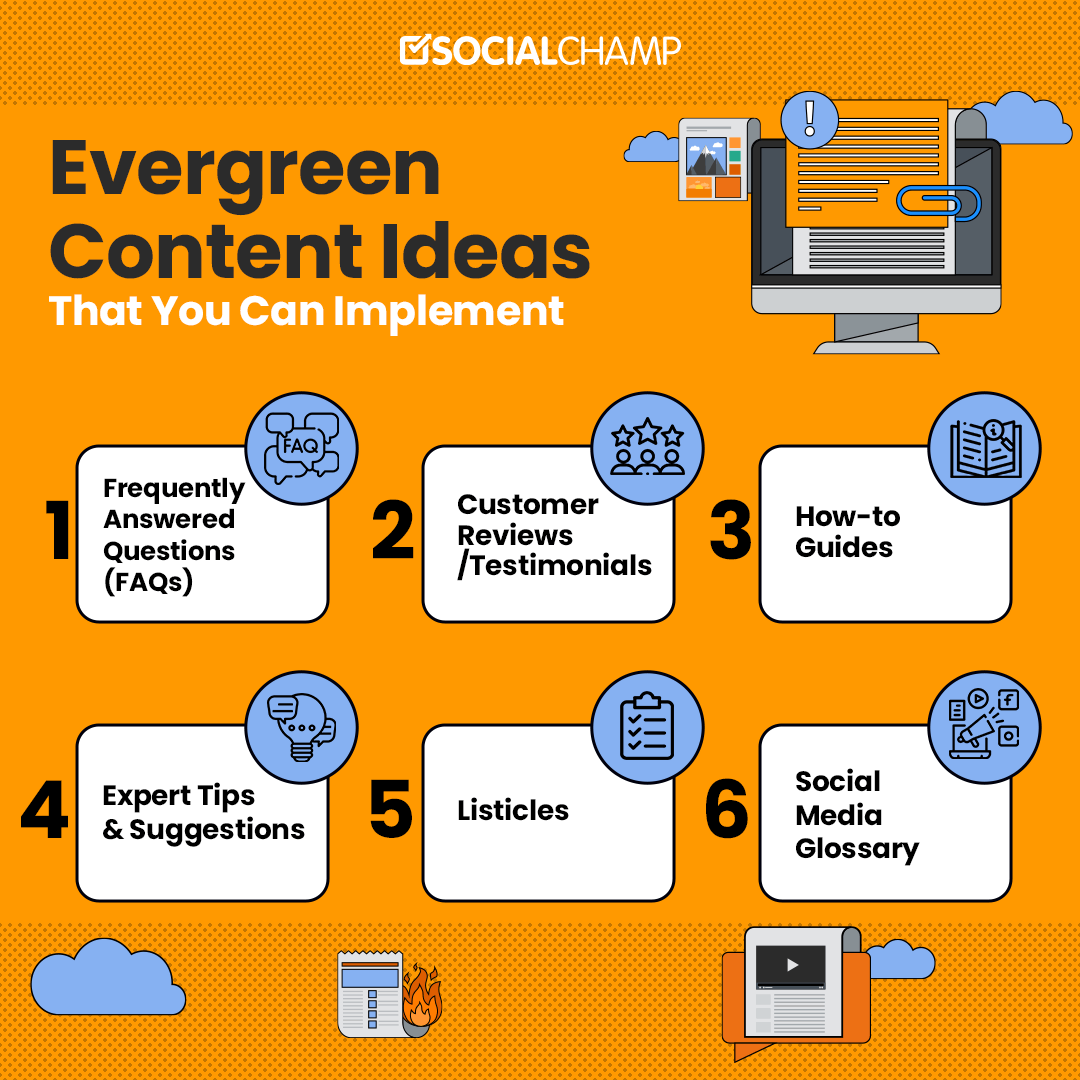
A good example of evergreen content would be a blog about how to dress for success, as this is a subject matter that is unlikely to change.
23. Gamification
The gaming industry is big business everywhere these days. If you walk down the street, you will more than likely hear the beeps and boops of a mobile game being played by a toddler.
Gamification has trickled into content marketing. It is the introduction of interactive gaming elements into content to engage audiences. Some examples of gamification include:
- Introducing a point collection scheme
- Earning badges for certain achievements
- The creation of a virtual currency
- Using a leaderboard to encourage friendly competition

24. Hashtag
Meet the hashtag.

We have all seen this unused noughts and crosses game on social media. But what actually is the point of it?
A hashtag categorizes content for users to find easily. Let’s say we created #baggytrousers.
We are categorizing this content as either about retro fashion or the smash-hit single from the alt-pop band Madness. Either way, anyone following or searching this hashtag is much more likely to find our content.

25. Impressions
Don’t worry. I am not about to bust out my best Morgan Freeman impression (though it is rather exceptional). Instead, we are talking about marketing impressions.
An impression is an opportunity for a potential consumer to engage or view content. This means that the content has been placed in their line of sight.
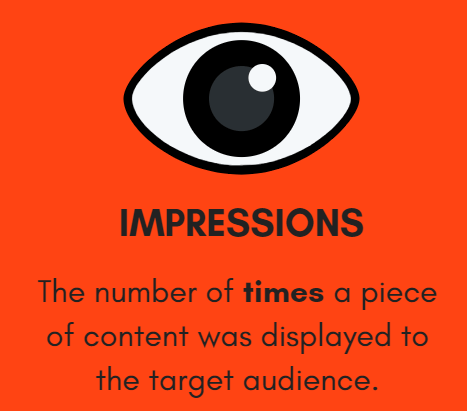 ’
’
It is important to note that impressions do not represent engagement, but rather the potential for engagement.
26. Inbound and outbound marketing
Imagine you are in a shopping mall and are suddenly harassed by someone trying to sell you a product. But then, you turn a corner and see a beautifully dressed storefront that draws you in.
This brilliant metaphor demonstrates the difference between inbound and outbound marketing.
- Outbound marketing: The naggy salesperson trying to sell you the product. It is the type of marketing that pushes the brand onto customers.
- Inbound marketing: The warm, inviting storefront. Inbound marketing wants to lure consumers to the brand.

27. Influencer
An influencer is an individual that has influence over a target audience. This does not have to be limited to mega-stars like Robert Downey Jr. or Sigorney Weaver. A thought leader in marketing, baking or even Lego can be an influencer to their target audience.
Many brands have turned to influencer marketing to promote their products and brands with incredible success.
But now, the reign of the traditional celebrity is no more. For a modern audience, their celebrity occupies social media such as TikTok, Instagram, Facebook, and Twitter.
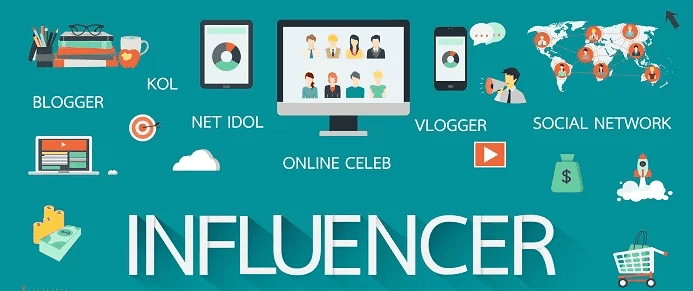
These influential content creators can be categorized into four distinct groups.
| Type of influencer | Number of followers |
| Nano-influencer | 1K-10K |
| Micro-influencer | 10K-100K |
| Macro-influencer | 100K-1M |
| Mega-influencer | 1M+ |
28. Infographic
An infographic condenses complicated ideas into an easily digestible visual for an audience.
For instance, we could read all 450 pages of the Clinical Guide to Cardiology to understand how blood flows through the heart. Alternatively, we could look at the infographic below.
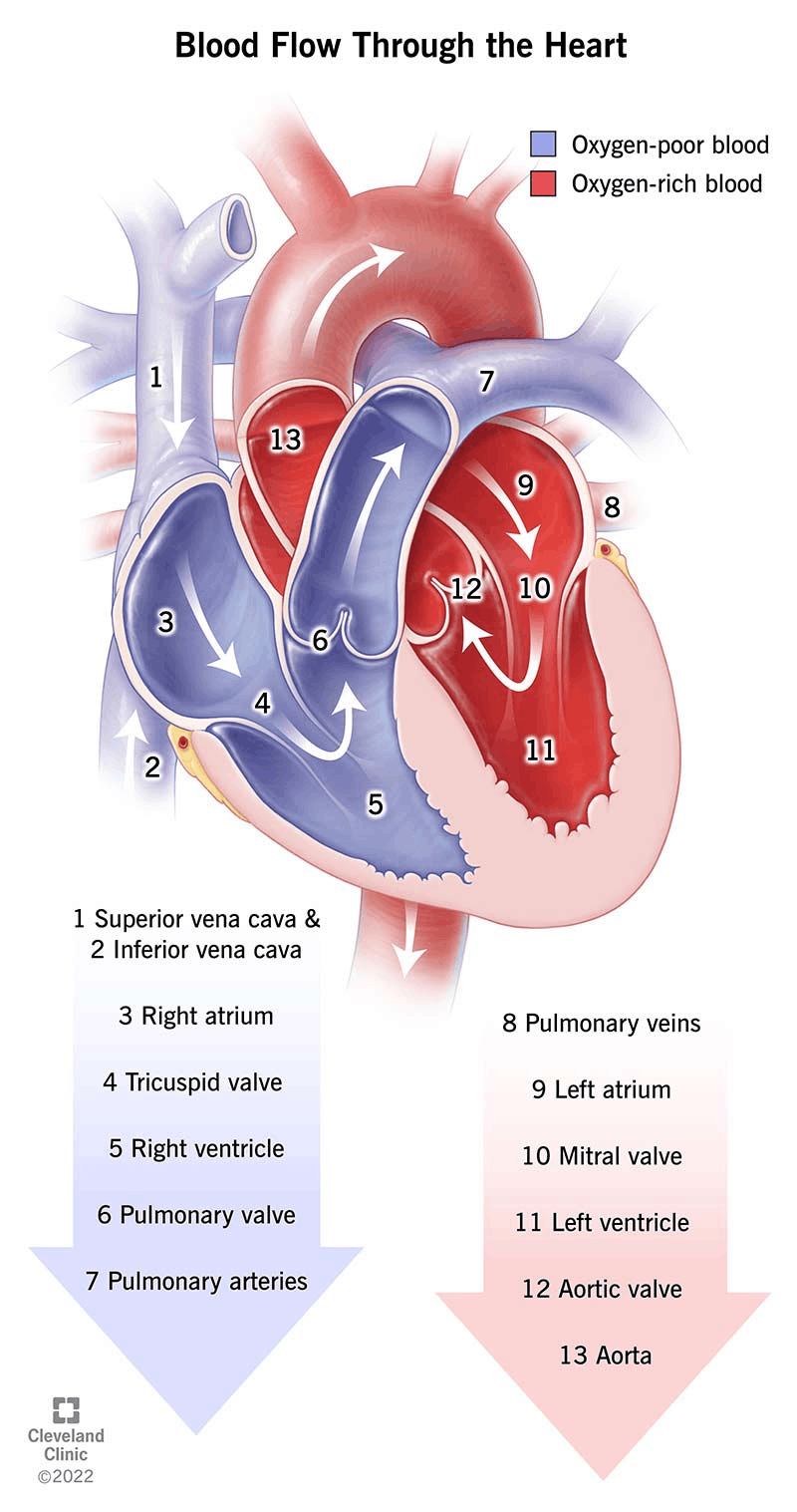
(We both know which would be easier and less time-consuming.)
29. Information architecture
Traditional architects design structurally sound buildings. An information architect instead creates a structure to our content and information. Their goal is to primarily make the information users need available in the most succinct and optimized ways.
This can involve:
- Creation of a site map – a file that explains the different relationships between your content
- Categorization of content – organizing your content into relevant categories
- Optimization of user navigation – making the website easy to navigate for users
- Application of meta – using meta details to help your target audience find your content
- Implementation of hierarchies – data being organized into parent-child relationships
For instance, if we owned a pet accessory business, we would not want our cat jumper products mixed in with our dog coats. That simply will not do. So, the website would need to be separated into distinct cat-egories. (I swear that was an unintentional pun.)
This would result in our users being able to find the content they desire efficiently.

30. Key performance indicators (KPIs)
KPIs are simply a means to measure the success of a specific business goal.
For instance, if we owned an online meal kit website, our KPI could be to sell 1,000 boxes to consumers within six months. We could then use metrics to see how successful our campaign has been in relation to our KPI and adjust our strategy accordingly.

31. Keywords
Keywords are incredibly important for SEO. These are the words that users enter when making a search query.
So, as content creators, we need to ensure that these terms are used within our own content. This will mean that a search engine will more likely rank our website higher in the SERPs, and, therefore, we will receive more organic traffic.
For instance, let us pretend we own a board game store. Now, we would want to rank highly for ‘board games’. So, if we enter our keywords into Semrush, we can see that some of the keywords we should include in our content are as follows.
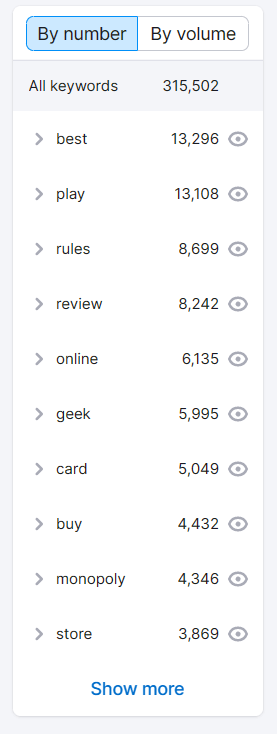
32. Keyword stuffing
Keyword stuffing is bad. Very bad, indeed.
It is an old black hat SEO trick of cramming as many keywords as possible into content. It reads as unnatural and robotic, like a Dalek attempting to write a romance novel.

What’s more, the folks at Google have become savvy with this technique. If it is identified, then the website in question will be penalized.
33. Lifecycle
A lifecycle, in marketing terms, is the entire content process from an initial idea to its creation and eventual publication.
Nice and simple, that one.

34. Meta title and description
Meta details are crucial to SEO rankings as they tell search engines what your content is about and therefore recommend it as a result for relevant user searches.
A meta title or title tag can be located in browsers, search engines, and external websites. It is used to summarize the topic of a web page for the audience. These should be between 50-60 characters.
Likewise, a meta description is found alongside the title tag. This will briefly elaborate on the actual content of the website. Descriptions should be between 150-160 characters.

It is also extremely important to remember to include your keywords in both your titles and descriptions to aid with SEO rankings.
35. Middle of the funnel (MOFU) content
Middle of the funnel comes after a consumer’s initial interest in a product, but before the final deal is made. This is the research stage of the buyer’s journey.

This is in the stage where your company needs to convince the user that your product is right for them. The type of content that is used in the middle of the funnel is:
- Whitepapers
- Case studies
- Comparisons
- FAQs
36. Owned media
Owned media includes online marketing channels owned and controlled by your company. This can include:
- Blogs
- Websites
- Mobile apps
- Podcasts
- Newsletters
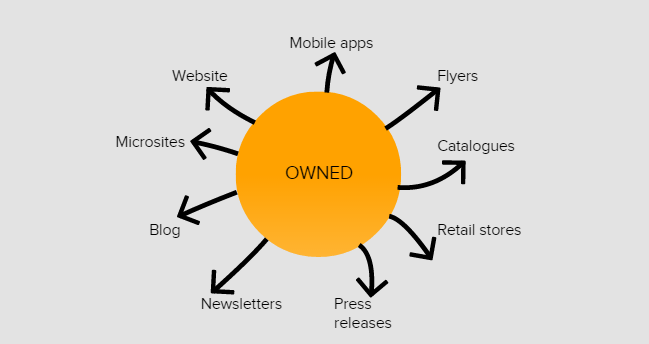
37. Pain points
Your customers have a lot of paint points. But there is no need for acupuncture. Your company can be the solution.
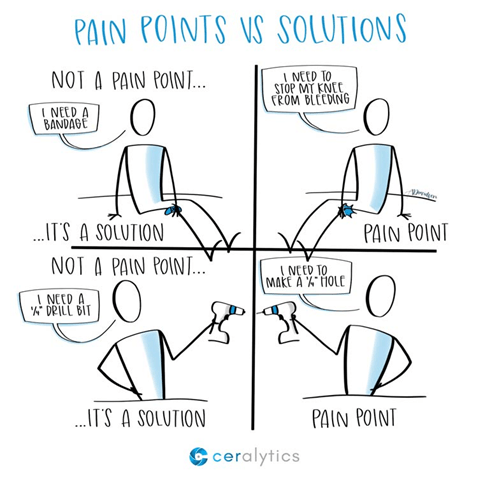
Pain points are the problems that potential customers are experiencing that need to be resolved.
They are usually broken down into four categories:
- Support
- Financial
- Productivity
- Process
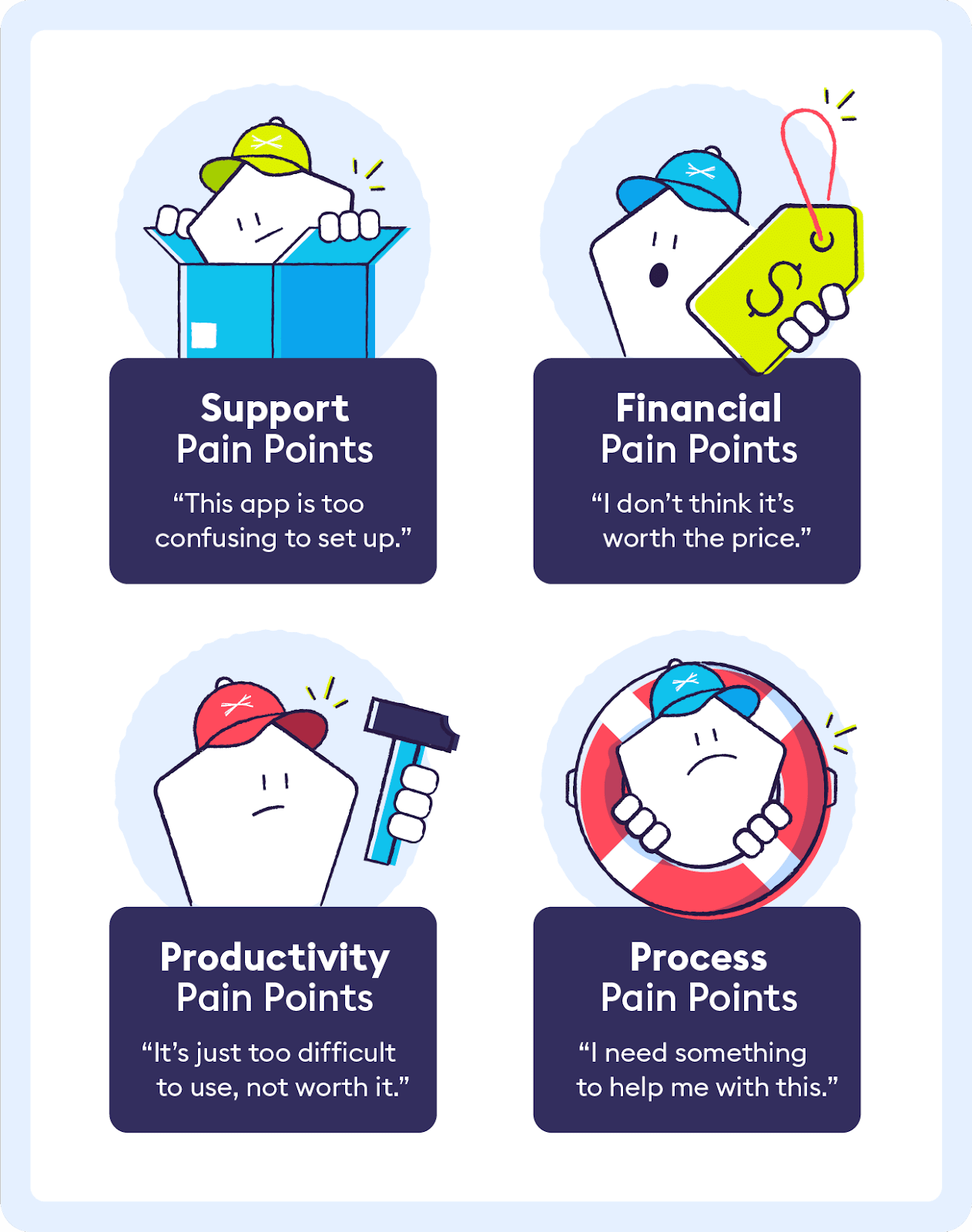
38. Readability
“If one were to ponder the ramifications of communicating with an excessive vocabulary, one would indeed realize that it was detrimental to their readership.”
Okay, take a break, Shakespeare. That big ol’ vocabulary might work wonders for research papers and academic work. But for a general audience, it just won’t cut it.
If we target the general public, we want to make content straightforward to read. This means a high level of readability with simplistic terms and shorter sentences.
The level of readability is measured primarily by the Flesch-Kincaid test. See below for a breakdown of the grades.
But don’t be patronizing. We just mean you need to appeal to the largest range of people possible. And it makes your content easier to skim over, so people can find what they need faster.
39. Repurposing content
Look at all that old content gathering cobwebs and being underused. What it needs is a new lease of life. But how?
A modern marketing technique is repurposing content. This is the process of transferring content from one format to another.
For instance, we could take a blog post and adapt it to become a YouTube video. Or, we could recycle a research paper into an infographic.
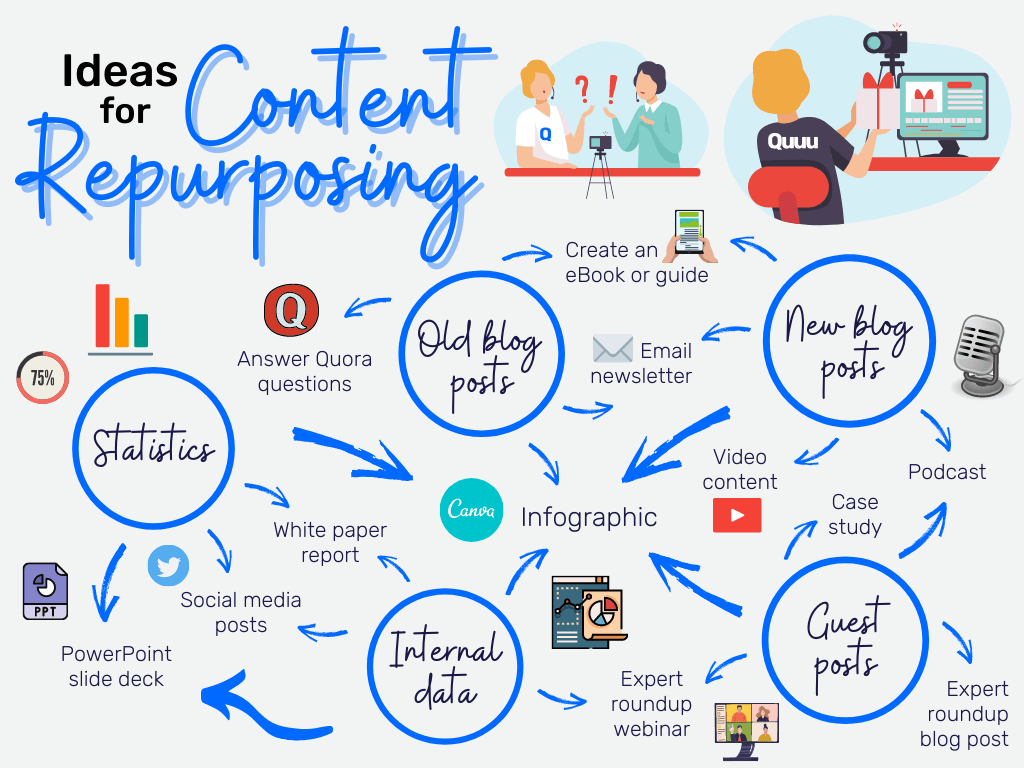
40. Responsive web design
We all own about six hundred different devices to view content on, from mobile phones to even video game consoles. And content strategists have had to adapt to this diversification.
Responsive web design is the belief that content should be consistent in terms of both function and look—no matter what device it is viewed on. This concept is all about providing a consistently high-quality user experience.
41. Return on investment (ROI)
ROI is another performance-measuring metric and must-know content strategy term. This statistic reveals the profit or loss from an investment made.
To figure out this metric, we need to do a simple calculation that can be seen below.
But it is important to note that it is incredibly difficult to measure the ROI of a single piece of content accurately. Therefore, we recommend focusing on other metrics to measure the success of a campaign such as conversion rate, subscribers, and KPIs.
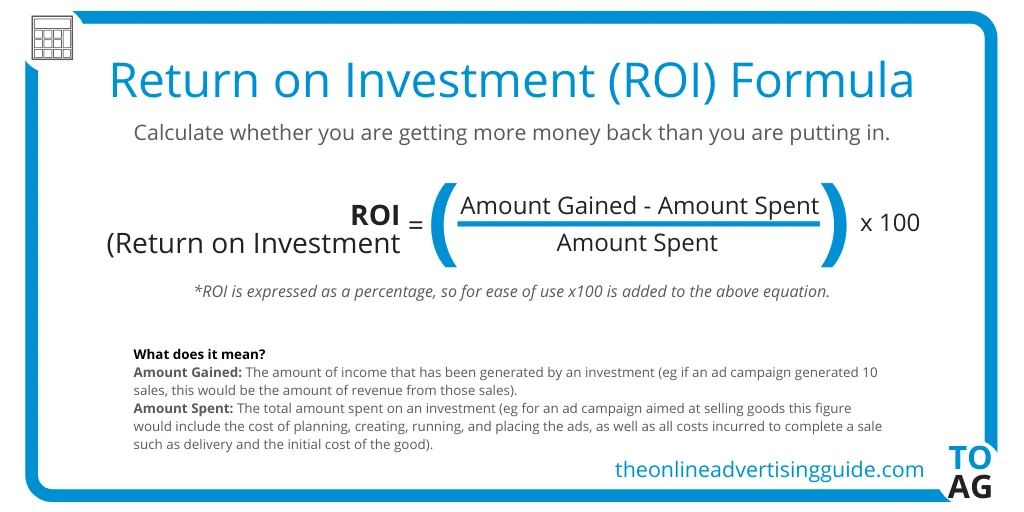
42. Search engine optimization (SEO)
SEO is THE content strategy term to know. It is one of the primary goals of any good marketing plan..
Search engines, specifically Google, have complex algorithms calculating where to rank websites in search results. The role of SEO is to crack that code and make your web page rank higher on the SERPs.
But why is this so important? A recent study showed that the number one result has about 27.6% CTR (click-through rate). The further down the SERPs we travel, the less website traffic is seen.
If we want our content to be visible to our target audience, we need this traffic.
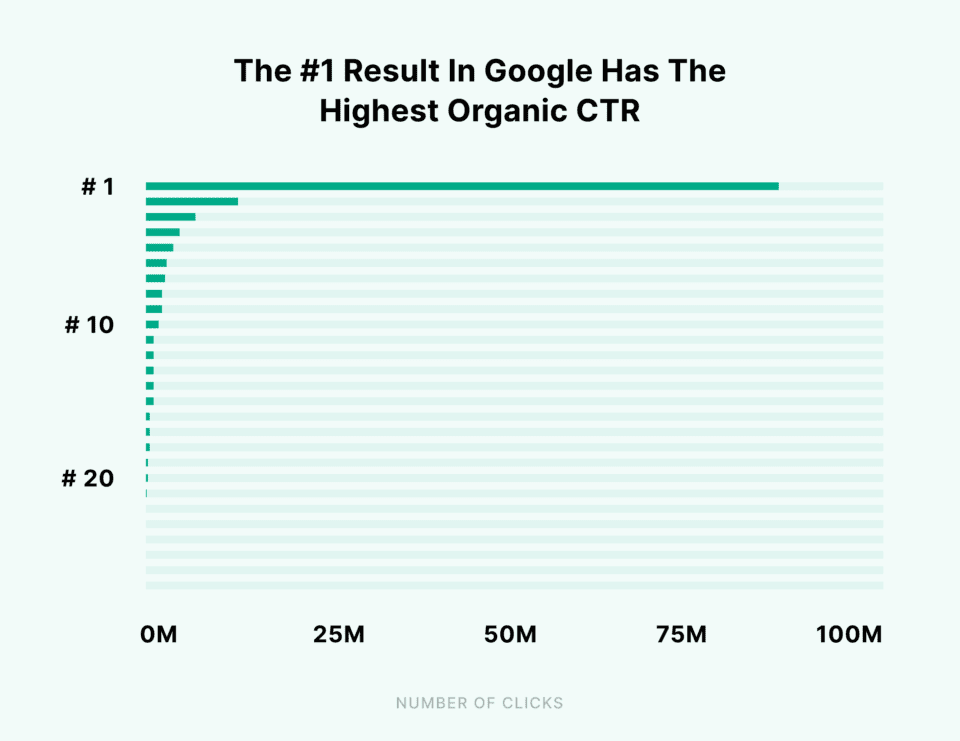
Here are a few SEO methods:
- Target keywords in your content that your target audience is searching for
- Use optimized meta-titles and descriptions
- Acquire backlinks from external sources
- Create a desirable user experience
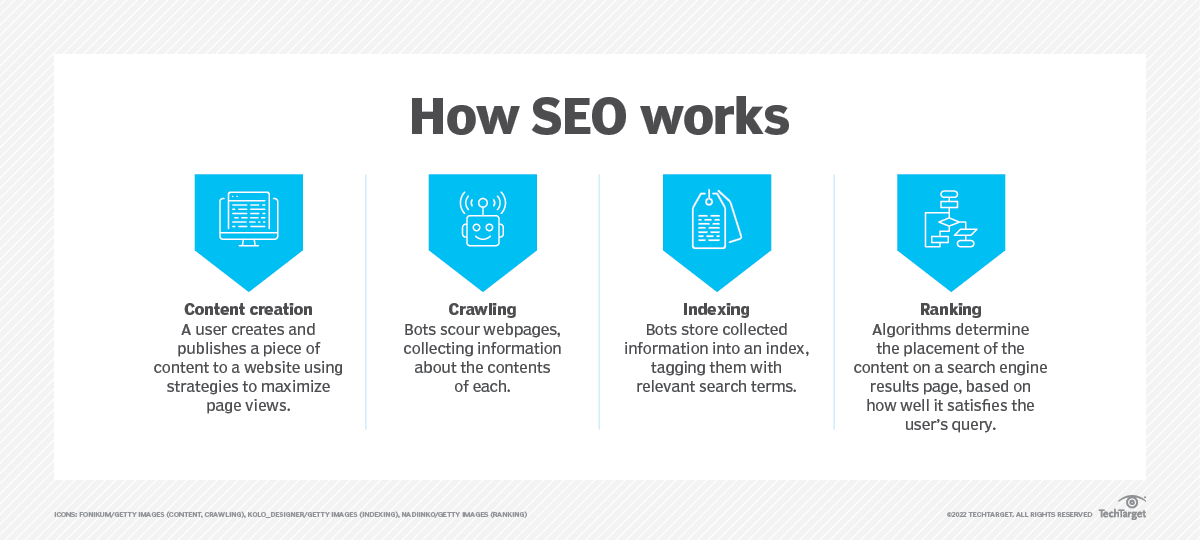
43. Search engine results pages (SERPs)
No matter what you type into Google, you will get endless search results. Even if I type in the most random keywords like ‘macaroni shark clipper’, the search engine will return 1,660,000 results.
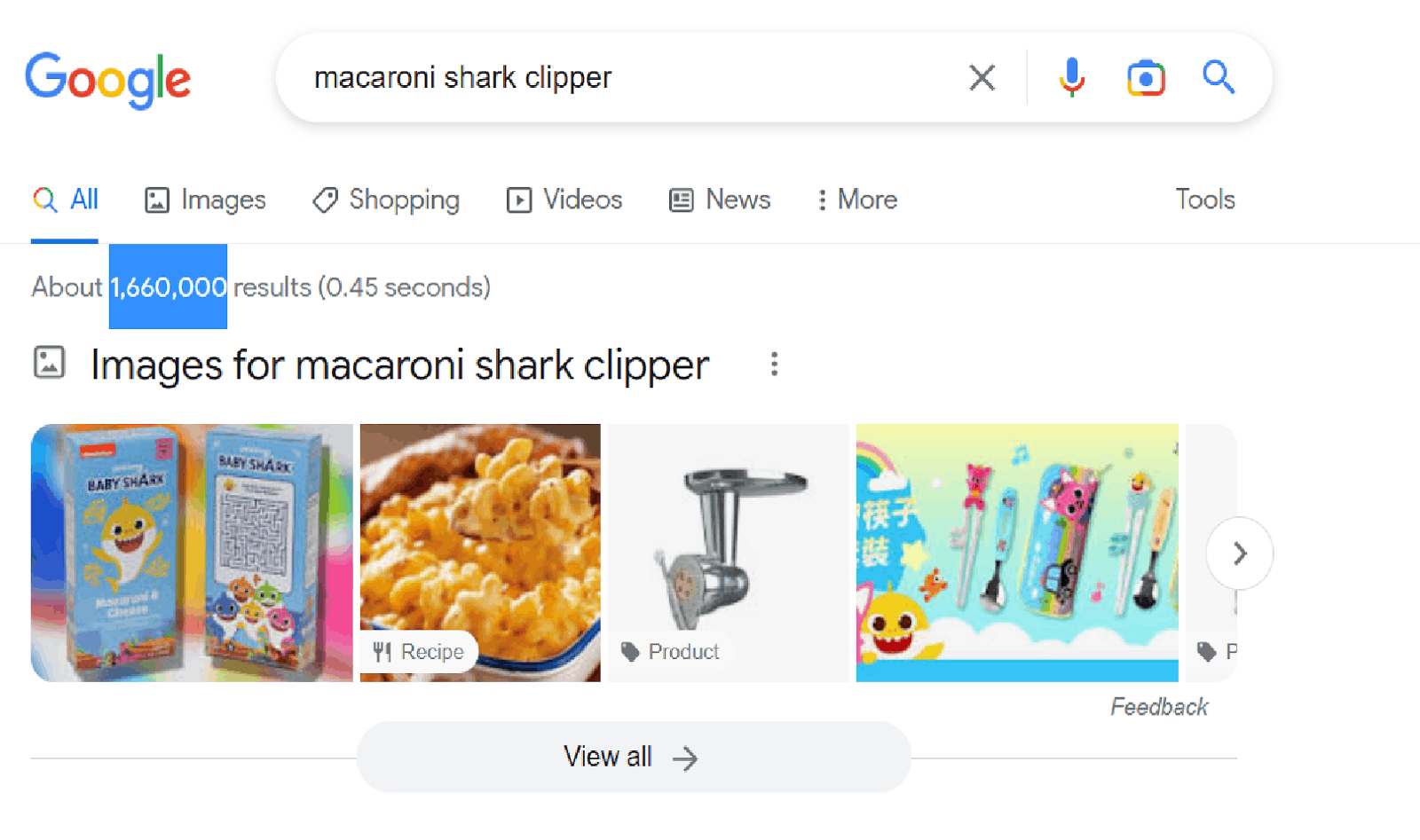
Now, these 1,660,000 results will not fit onto a single page. So, Google creates countless Search Engine Result Pages (SERPs) to contain all this content.
The websites are then displayed in descending order regarding relevance to the search term, with the most relevant content making it to page one.
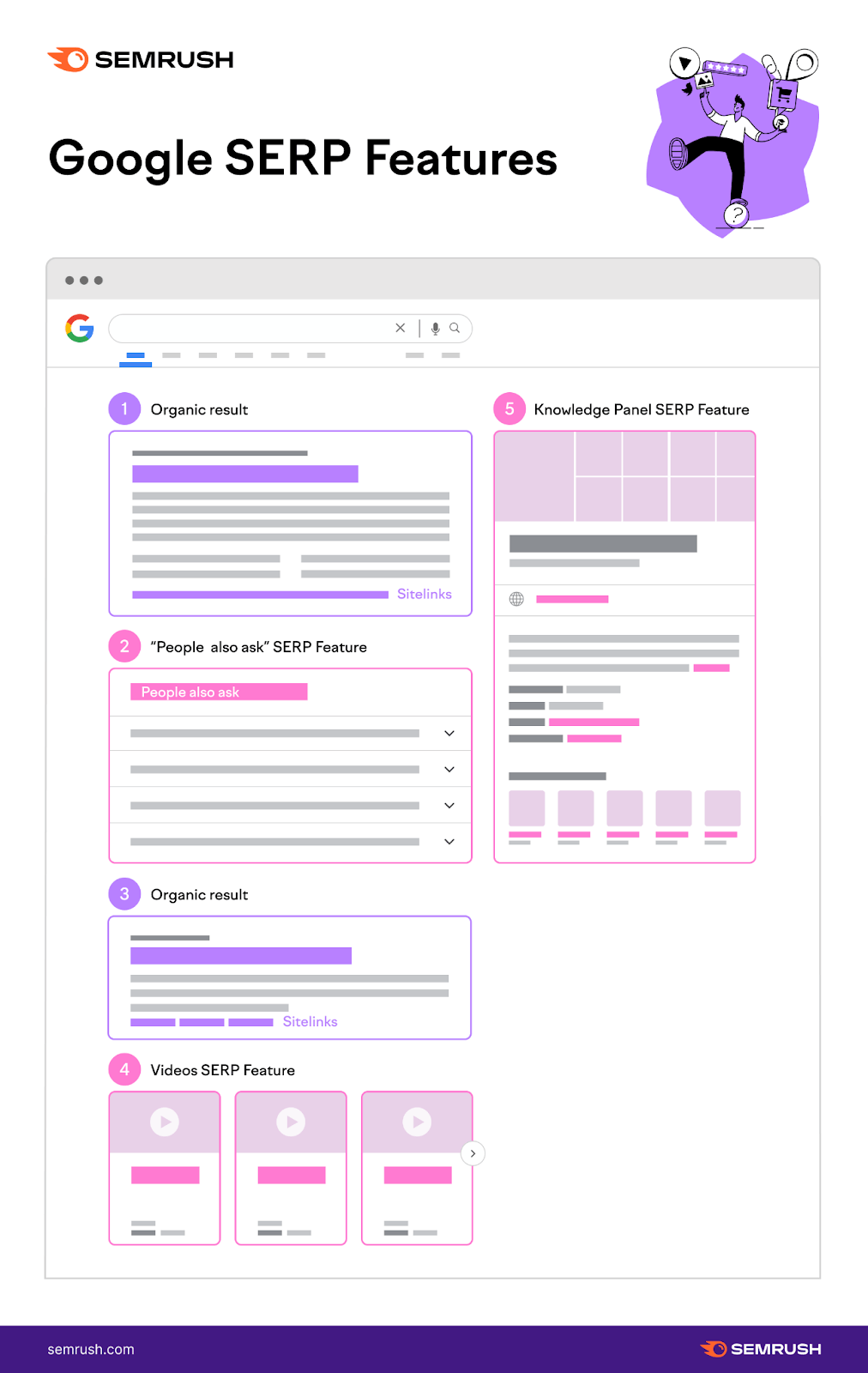
44. Top-of-the-funnel (TOFU) content
Do not fret; we will not go on a long spiel about the benefits of being a vegetarian. No, we are not talking about that kind of tofu.
In marketing terms, TOFU stands for top-of-the-funnel.
Top-of-the-funnel content is aimed towards consumers in the earliest stage of the buyer’s journey. They may have an issue that needs a solution, so they are searching for information.
Your goal is to make them aware that your brand is the answer to their need in an attempt to generate leads.
Types of top of the funnel marketing include:
- Blog posts
- Video content
- Infographics
- Social media posts
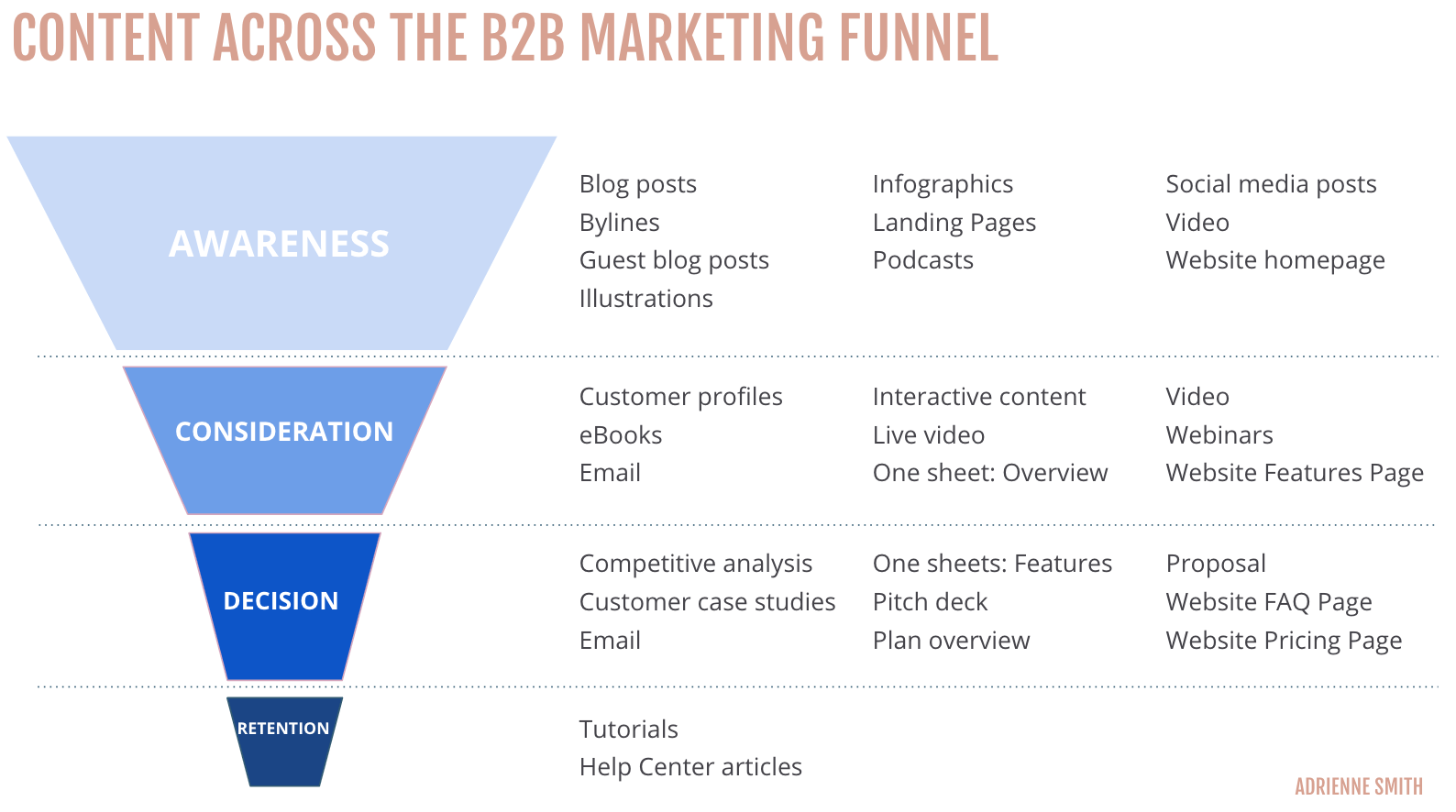
45. Thought leader
Becoming a thought leader is a guaranteed gateway to securing more traffic, engagement, and conversions.
As a society, humankind looks for leadership. And a thought leader is someone who has expertise in a specific industry. Walt Rakowich, the former CEO of Prologis, stated:
“I believe thought leaders are not only on the cutting edge in terms of their ideas, but [they] also know how to inspire and influence others.”
This level of expertise encourages individuals interested in this niche to gravitate towards thought leaders and their brand as a source of knowledge.
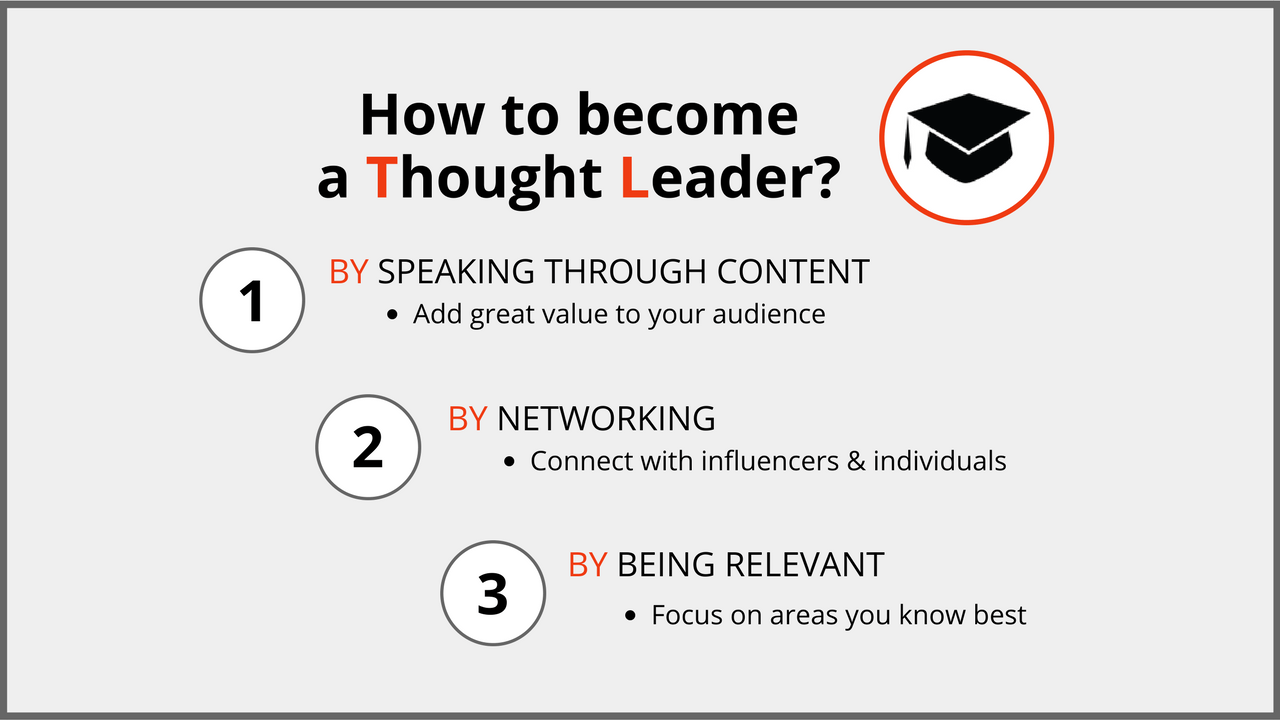
46. User experience (UX)
How are you finding the Quuu website? Hopefully, you’re enjoying it because we care about our user experience.
User experience is how we interact with a product. And there are many factors that affect the quality of said experience.
For instance, imagine we visit a website that is an organizational mess. Broken links, slow response rates, constant grammar and spelling errors – you get the picture. That is a bad user experience and drives consumers away from our brand and product.
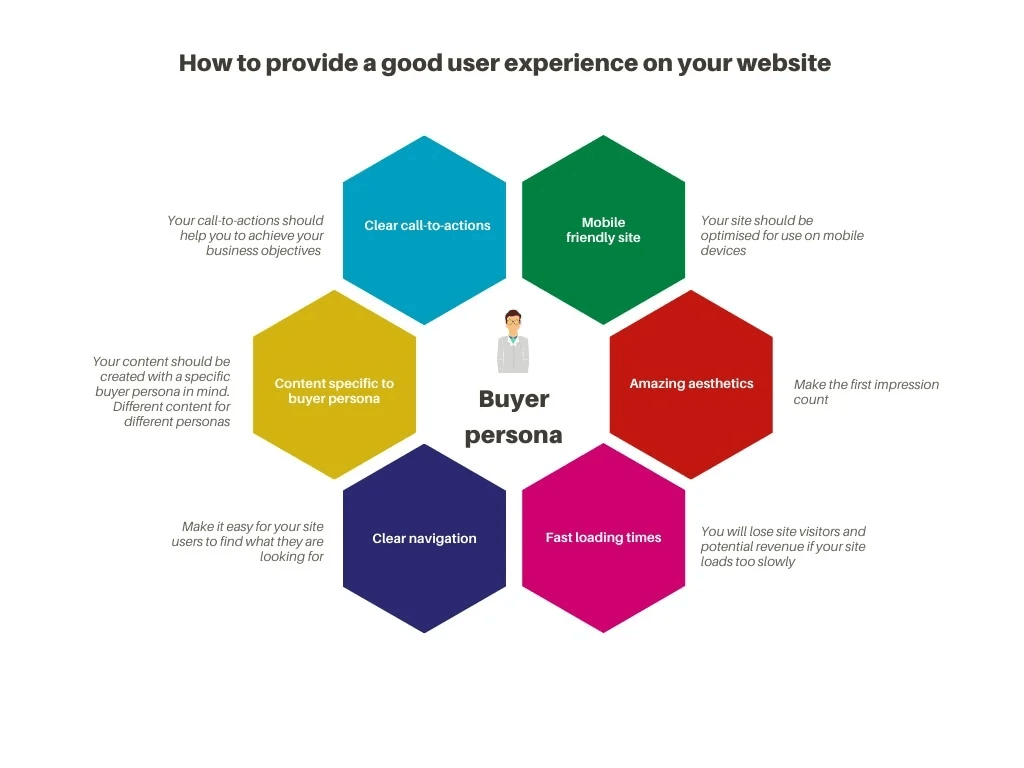
47. User-generated content (UGC)
Did you know some of the most brilliant content creators at your disposal are your consumers? Now, before you sack your entire marketing team, let me explain a little further.

User-generated content is a fantastic weapon in your content marketing arsenal. It is content created by your target audience, completely for free. Types of user-generated content include:
- Reviews and testimonials about your service or product
- Social media posts from your demographic
- Video unboxing of your product
- Selfies wearing your product
48. Users
Wow, look at all of your followers on your social media page. Oh, and check out how many visitors you have had to your website. Someone has become rather popular with their users.
Yep, users are any individual who uses, accesses, or views your content. Even that angry-looking guy in the suit.

49. Viral marketing
Viral marketing has one goal. And that is to spread brand awareness quickly and widely via word-of-mouth—a bit like a virus. (Oh, I see what they did there.)
The most perfect piece of content that’s sure to be a viral hit can still fail miserably. Meanwhile, a random cat meme sets the internet on fire.
Viral marketing is temperamental, and its success lies in predicting trends and fads. And also a lot of luck.

50. Webinar
A webinar is the fusion of a live stream and seminar.
It is a virtual event about a specific topic attended entirely by a virtual audience. The audience can also interact with the host in real time by using a chat function.
51. What You See Is What You Get editor (WYSIWYG)
This type of editor allows the user to edit content and view as it would be seen on a consumer’s screen.
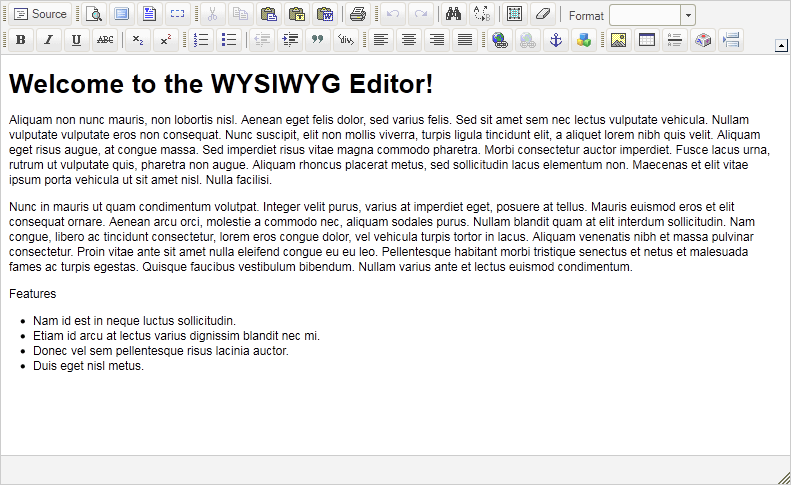
These editors are much more user-friendly than their code-based counterparts as they resemble common word-processing software in layout and operation.
52. Whitepapers
Whitepapers are one of the longest forms of content you will encounter. They are detailed reports that outline an issue and suggest a solution.
But don’t mistake this type of content as a product pitch or blog. No, these are tonally serious pieces of literature designed to reflect well-researched facts. They are essentially academic papers on a topic, no fluff or fun.
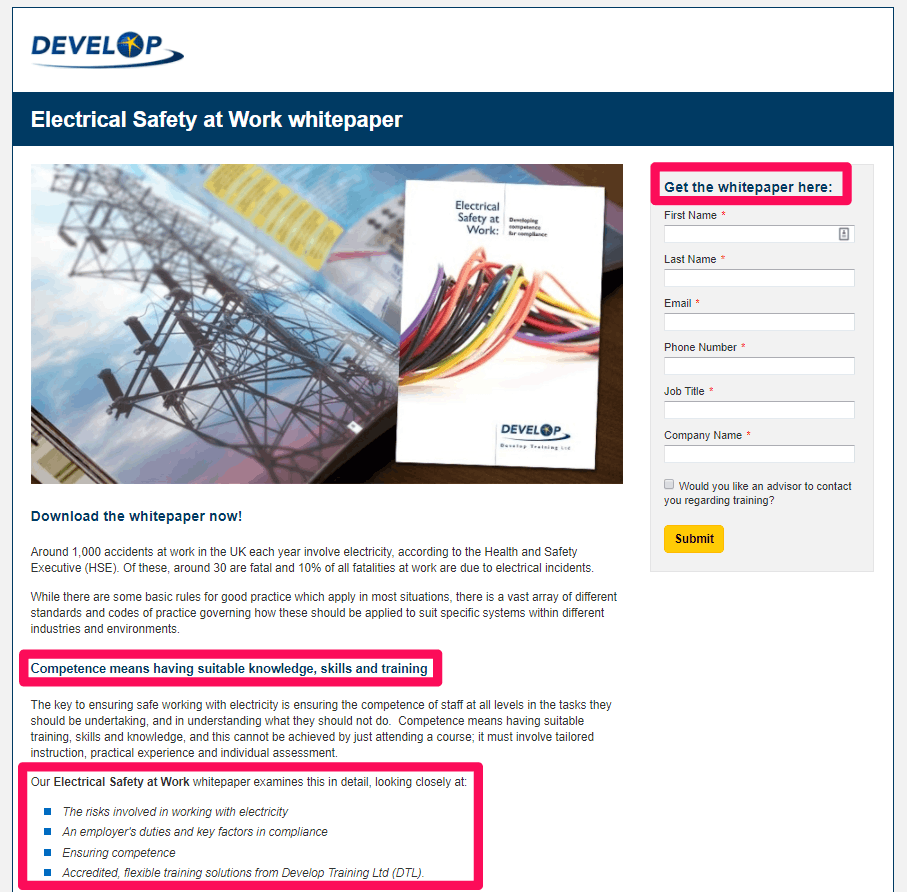
Conclusion
Congratulations! You are now a walking, talking dictionary filled with must-know content strategy terms.
So, head out to work today knowing you won’t be thrown a curve ball of unknown jargon. Instead, be confident that you can translate even the most baffling of marketing terms.
But don’t just sit on your laurels; there is always something new to learn. We encourage you to browse the web for more content marketing terms definitions.
After all, as Brian Tracy once said: “Continuous learning is the minimum requirement for success in any field.”
How many of these terms do you know? What is a content strategy term you want to learn the definition of? Go forth and flesh out your content marketing vocabulary now.

